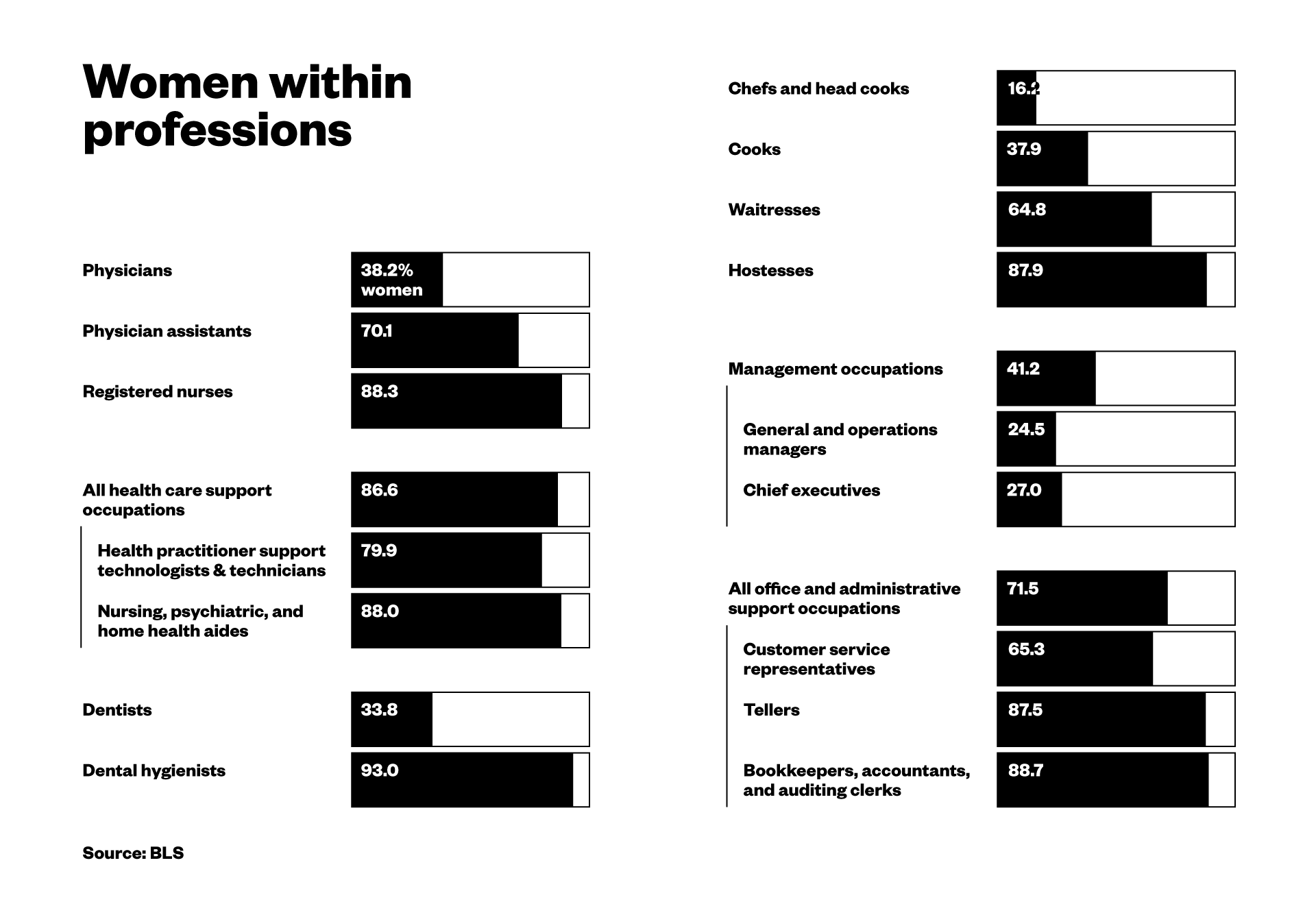If every woman in America refuses to go to work Wednesday for A Day Without a Woman, it will be no surprise when the country grinds to a halt.Somewhat more surprising will be the jobs left undone for the day.More than a quarter of working women in the U.S. are employed in just 22 occupations, according to the Institute for Women’s Policy Research. Those jobs, which include early childhood teachers, maids and housekeepers, and cashiers, pay a median wage of less than $15 an hour. And they’re largely jobs that allow businesses to function, said Elyse Shaw, a researcher who worked on the Institute for Women’s Policy Research report.“[It’s] the work that gets done kind of behind the scenes, the vital work that gets done to make the economy thrive,” she said.Black, Asian, and Latino women make up only about a third of the female workforce, according to the Women’s Bureau Department of Labor, but the Institute report found that women of color comprise nearly half of the women working these jobs. Almost a fifth of the jobs are filled by immigrant women. And while the number of these jobs is growing, what the women working them are paid often isn’t.Even in an overwhelmingly female-dominated industry like health care — women make up three-quarters of the workforce — women are found largely in lower-paid support roles. They make up about 70 percent of all physician assistants and 88 percent of registered nurses, according to the Bureau of Labor Statistics. The Institute for Women’s Policy report found that women of color fill more than a third of all “miscellaneous healthcare support positions.”Yet only about a third of physicians are female. (While the number of women in medical school is rising, women are still much more likely than men to leave those professions.) Dentists’ offices are even more divided; nearly 70 percent of dentists are male, while 93 percent of dental hygienists are female. Here are seven occupations that would practically disappear on a real day without women:
Here are seven occupations that would practically disappear on a real day without women:
Advertisement

- Office and administrative assistance: 77.4 percent women
- Healthcare and care support: 87.7 percent women
- Cashiers: 71.6 percent women
- Food preparation and serving: 71.4 percent women
- Early childhood care and education: 93.5 percent women
- Beauty and personal services: 82.1 percent women
- Maids and housekeeping cleaners: 88.2 percent women